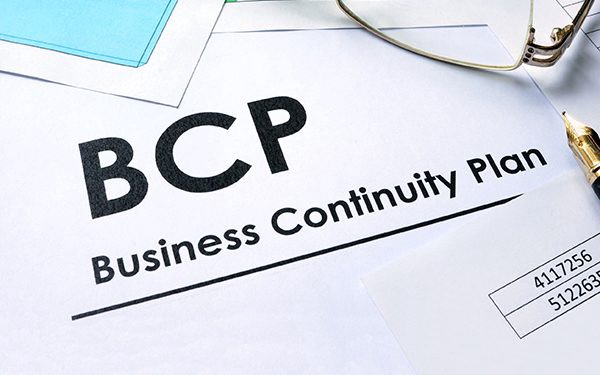Contents:


The list price is generally present in the catalog of the manufacturer. Moreover, the manufacturer gives this discount usually when the buyer purchases the product in bulk. In contrast, as the purpose of a cash discount is to accelerate a seller’s cash inflows, the amount of a cash discount depends on how promptly a buyer pays an invoice. As the purpose of a trade discount is to increase a seller’s revenue, the amount of a trade discount depends on the size and frequency of a buyer’s purchases. In accounting, cash discounts are usually expressed as 2/10, n/30.
Acelyrin Raises $540M In IPO, Stock Gains Over 20% In Trading … – Benzinga
Acelyrin Raises $540M In IPO, Stock Gains Over 20% In Trading ….
Posted: Fri, 05 May 2023 17:52:06 GMT [source]
A cash discount which is also called a purchase discount or sales discount is a decrease in the purchase price of goods due to early payment of cash. In other words, the seller of goods is aggreging to decrease the price of the goods if the buyer agrees to pay for the goods earlier than the due date. Cash discounts are also called early payment discounts or prompt payment discounts. In case when both the discounts are allowed to the customer, in a transaction, then the trade discount is allowed on the list price first, then cash discount is allowed on the net amount payable. However, on the other hand, cash discounts are recorded in the books of accounts. Cash discounts are usually allowed on the invoice price of the goods.
Some helpful terms around cash discounts
In this, sellers will as a rule reduce the sum that the purchasers owe by either a little percentage or a set dollar amount. The purpose of offering cash discount is to encourage early payment of sales price by the buyer. A trade discount is a discount offered on the list prices of products on wholesale purchases. For example, a wholesaler offering a credit period of 30 days to the retailer, may offer a cash discount of say 2% in case the retailer pays the invoice earlier, say within 10 days.
The markup percentage refers to the percentage that is added to the original selling price, so that the business offering a cash discount still makes a profit if the cash discount is used by their customers. You can use the markup percentage to arrive at the best sales price, but before you can determine the markup percentage, you need to determine the gross profit margin. A cash discount is a reduction offered by a seller at its product’s price when the buyer makes payment right away or within the given time limit.
Conclusion – trade discount vs cash discount:
ABC offers a cash-back scheme where a discount of Rs.10,000 is allowed for all the cars sold in the year 2020. Discount is announced and given after the supply and not mentioned in the tax invoice. Hence, the discount value cannot be deducted from the transaction value. In this case, ITC claimed is to be reversed by the recipient, or a commercial credit note is to be issued by the supplier. Discounts given before or at the time of SupplySuch discounts are to be mentioned in the invoice separately. An example of such discounts can be offered for making the payment at the time of supply itself.
PacWest Bancorp Announces Quarterly Dividends – PacWest Banc … – Benzinga
PacWest Bancorp Announces Quarterly Dividends – PacWest Banc ….
Posted: Sat, 06 May 2023 02:00:00 GMT [source]
In the second reason cited above, not only can billing be a time-consuming administrative function, but it also can be an expensive one. Most businesses that are large and successful do not even think about this. A startup company or a young professional, however, might be trying to rein in their costs for labor and supplies. Cash discounts are deductions that aim to motivate customers to pay their bills within a certain time frame. Cash DiscountCash discounts are direct incentives and discounts provided by any company to their customers in exchange for paying their bills on time or before the due date. This is a common practice, and the discount may differ from one company to the next depending on the terms and conditions.
Emilie is a Certified Accountant and Banker with Master’s in Business and 15 years of experience in finance and accounting from large corporates and banks, as well as fast-growing start-ups. I) Discount is established in terms of an agreement before supply. In simple words, both supplier and recipient have entered in an agreement where the discount is mentioned.
Join Taxguru’s Network for Latest updates on Income Tax, GST, Company Law, Corporate Laws and other related subjects.
Also, no record is to be maintained in the books of accounts of both the buyer and seller. Since the trade discount is decided based on the quantity being purchased by the buyer, we can say it is offered only at the time of purchase. This sale done can, however, be cash or credit sales for the company. Whereas, in case of cash discount a bill is already generated, but if the payment is made much ahead of the payment date, some percentage of discount is offered on this billed or invoice rate. Higher trade discounts are generally offered on higher sales volume, increasing the scope for higher profit margins when the resellers ultimately sell the products to the end buyer. The purpose of trade discount is to thus encourage bulk purchases by resellers.

Buyers offer discounts and sellers receive it, either implicitly or explicitly. The purpose of this article is to explain the difference between trade discount and cash discount in detail. All in all, cash discounts can further develop the cash flow of the business alongside paying off its bad debts but, simultaneously, it could prompt a decrease in the overall revenue of the seller. So, before opting for a cash discount strategy, it is important to analyze your business objective for using this. Cash discounts are the reductions in the amount to be paid by a credit customer to whom the seller has given credit terms in case that customer pays within a given time period.
Manufacturer M decides to take an advantage of the prompt payment discount and pays the invoice within 30 days. Hence, the intent or commercial arrangement between the supplier and buyer would decide whether the discount in relation to any supply could reduce the GST liability of the supplier to the extent of such discount. If post supply discounts were not anticipated at the time of supply, it is not allowed to be deducted from value.
Offering a reduced price for multiple purchases will increase the possibility that customers will want to purchase more to take advantage of the opportunity from the company. Many MNC’s are now days asking there distributors to offer products to retailers / customers much below the cost price of distributors, where in distributors are compensated by credit notes . Over ther period distributor would have accumulated GST credit inspite of having nil stock.
Cash discount, on the other hand, is offered at the time when the seller offers payments and is calculated as an additional deduction on the printed invoice. It is offered subject to certain conditions, incentivizing the buyer to make a large part of the payment upfront and pay the remaining installments as soon as possible. Trade DiscountThe reduction in list price allowed by a supplier to the consumer while selling the product in bulk quantities is referred to as a trade discount.
For example, lets say Ariel Surf, company A bills to Distributor D at taxable value of Rs 100 with Gst being 18%. Now, A, runs promotional scheme of 20% and asks D to supply product to Retailer R by selling at Rs 82 (Rs 100 being cost plus 2.5% margin – and 20% discount on cost plus margin) . And A will reimburse D Rs 20.5 (20% promotional scheme) via creit note without any GST impact on it. In order to encourage customer payment, the company offers a term payment of 5% 10/Net 30. The customer paid the full amount after 5 days to enjoy the cash discount.

Trade discount is referred to a discount that is granted by the seller of the goods to the buyer on the list price or catalog prices of the goods supplied mostly in case of bulk sales. E.g. a wholesaler with a high volume purchase will get a 30% of trade discount. A cash discount is offered mostly to facilitate a prompt payment from the buyer.
These are known as gross method of cash discount and net method of cash discount. Neither the buyer nor the seller records the discount amount in the books of accounts. They only record the transaction of sale/purchase in the accounts of both parties. For example, if a retailer purchases 100 units of a product with a list price of $10 each and receives a 20% discount, the retailer will pay $800 instead of $1,000. A four-wheeler dealer sales vehicle giving some discount (5% to 10%) to the customer. The dealer sales accessories to some customers on certain discount and to some customers, the dealer sells on 100% discount on separate invoice.
The CCC can also highlight a company’s liquidity risk by measuring how long a firm will be deprived of cash if it increases its investment in resources. Cash discounts can benefit a provider of goods or services by giving her the cash sooner than she normally would get it. In turn, this cash could help her to grow the business at a faster pace while saving on administrative expenses, for example. For the seller, as more and more quantity is sold, his quantity sold per customer increases leading to better throughput and warehouse efficiency. They are often used to sweeten the deal between a buyer and a seller. Discounts reduce the asking price of a particular product or service.
Calculated over the course of a year, making use of cash discounts can save a relatively large amount of money. As the previous example shows, it’s sometimes even worth it to take out a loan from a bank in order to use a cash discount. As long as the effective interest rate for the supplier credit is greater than the interest rate for the bank’s loan, taking on a loan is more cost-efficient. There are also graduated discount percentages, in which the discount percentage changes depending on the discount period. In brief, a cash discount is the price reduction that is granted when a customer pays their invoice within a limited time period. Due to the cash discount, the net revenue or profit margin will decrease because of the cash discount given by the seller.
Nanobiotix Stock Triples In Trading Session: What’s Going On With … – Benzinga
Nanobiotix Stock Triples In Trading Session: What’s Going On With ….
Posted: Fri, 05 May 2023 17:49:59 GMT [source]
trade discount vs cash discount Discount is a subtraction from the list price of the goods, allowed by the trader to the customer at an agreed rate. On the contrary, a Cash Discount is a discount allowed to the customer, when he/she makes cash payment of the goods purchased, within the stipulated time. An example of a typical cash discount is a seller who offers a 2% discount on an invoice due in 30 days if the buyer pays within the first 10 days of receiving the invoice.
For example, if the company offers a 2% discount, this would amount to $2 of the $100 total sales price. The sales price would then be $98 ($100 – $2), which would shift the gross profit margins and markup percentages somewhat. In this article, we have learned the meaning of accounting terms cash discount and trade discount. Cash discounts refer to a discount that a seller offers to a buyer in return for paying a bill before the maturity of the due date.
The difference between the list price and the amount of discount is the net price. The cash conversion cycle can be particularly helpful for analysts and investors who wish to draw a relative-value comparison between close competitors. Combined with other fundamental ratios, such as the return on equity and return on assets , the CCC helps to define a company’s overall viability. For example, the CCC may foretell the effectiveness of its management team.
Usually, the customers have the habit of bargaining and giving them these discounts; it enables a firm to achieve its objectives and retain the customer. Thus, it will be favorable for both the customer and the organization. In the case of Trade discounts, there is no entry made in the books of accounts of the buyer and seller. The cash discount of 2% amounting to 20,000 will be an expense for the business and will be recorded in the books of accounts. Payment within the credit period will benefit Z with an additional cash discount of 2%. 10 vehicles were purchased by Unreal Pvt Ltd with a 5% trade discount on the list price of 1,00,000 each.
- Sellers usually adopt one of two methods to deal with the recording of cash discount in their books of accounts.
- Trade discounts are typically offered as a part of a discount policy to the seller.
- Offering trade, cash post-sale discounts are very common in business.
In any law, Tax has to be paid on the value which is subject to tax or the taxable value. The value which is paid or agreed to be paid by the receiver of the goods or services to the supplier of goods or services is the value on which the tax is to be levied. Such value which is considered for a tax levy is termed as ‘Consideration’ as per GST Act. Carl&Co pays $6,600 for 50 desks after receiving a discount of $900.
In order to provide an incentive for this, many service providers and distributors offer a price reduction in the amount of a certain percentage of the invoice total. Trade discount is offered by sellers who sell in bulk – mainly manufacturers, traders, wholesalers or distributors. A cash discount also termed as ‘early payment discount’ is the discount offered on the billed price of products to incentivize early clearance of dues. Cash discount is recorded in the books of accounts by both the seller and the buyer. The seller accounts for this as sales discount and the buyer accounts for it as purchase discount. Calculate the trade discount and the net price Carl&Co pays if the desk’s list price is $150.
Along these lines, it saves time, money, and endeavors of the company that it could need to spend on the collecting process for gathering the due sum from the clients on schedule. It is considered a motivator that a company offers to its clients or customers in the cases they make the payment on or before the given date according to the company’s agreements. Getting a cash discount at any phase of the cash conversion cycle could assist with making the organization more powerful and reduce the number of days it can take to convert its resources into income or cash flows.
In a cash discount, the seller usually reduces the amount that the buyer be indebted by either a small percentage or a particular amount. In this article, we will learn about cash discounts and trade discounts. We will also discuss the differences between cash discounts and trade discounts.
Trade discounts are generally offered at higher percentages (5,10,20% etc). Cash discount, on the other hand varies depending on how early the payment for purchases is made. The provisions related, to the allow ability of discounts as a deduction from the supply value, are mentioned in the diagram below.
